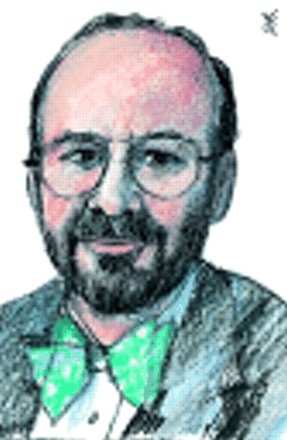The second world war flattened most of Nijmegen, but spared some of St Steven’s Kerk, a fifteenth century gothic building in the town centre overlooking a branch of the Rhine. When I was in the restored church last month people were uncertain about whether it is Catholic or Protestant and seemed to wonder why I was asking. Not for the first time I thought we can learn from the Dutch. 
It was a Friday afternoon and the bells were ringing to announce a public lecture. A local professor was retiring and several foreigners had been invited to join the procession. I am not sure if this was the first overseas trip for my MD gown. It was given to me by the widow of an eminent Scottish doctor after I wrote an article about the annual trauma of the graduation ceremony. Having his name on the label is strangely comforting.
As we robed in the chapter house my stand up collar and white bow tie were outshone by united colours of Europe. A Spaniard in yellow and purple, with a fringed hat, looked like a mediaeval pontiff. Two Swedes in dark shirts and top hats might have stepped from an Ingmar Bergman film. Doctors from the low countries were in Calvinist black with discreet ostentation—emerald edging, touches of embroidery, and luxurious velvet collars—and some, in bavettes and round hats, looked like judges from the European court.
My own cap, a kind of floppy mortar board, has never impressed me but it was, I realised, in the local style. Of course: Edinburgh medical school was founded by doctors who had studied in the Netherlands. I remarked artlessly to a woman beside me that I had only just realised that Scottish academics wear Dutch caps. Suddenly blushing, I eyed her warily, but her smile gave no clue as to whether our lingua franca extended to double entendres.
The lecture itself was delivered from the pulpit while we followed an elegantly printed translation. It was about the role of homocysteine in preventing birth defects. The high, whitewashed nave had chandeliers but no projection facilities so the talk was illustrated by a molecular model, held up by the lecturer’s little granddaughter and then propped in a side aisle. I looked at it regretfully. One carbon atom too many for jokes about the cysteine chapel.
This was a grand occasion for a particularly distinguished man, but public valedictory lectures are normal in the Netherlands, like inaugural lectures here. I like the idea. It could be criticised for encouraging excessive respect for seniority—an affliction among doctors in mainland Europe. Nevertheless, there is something fitting about requiring a chairholder to stand up in front of the people and give an account of his or her stewardship.
We should try it. It might counterbalance that current British fad, excessive respect for middle age. People should retire with a bang, not a whimper, and ought to dress up for it. All professors are peacocks at heart.


